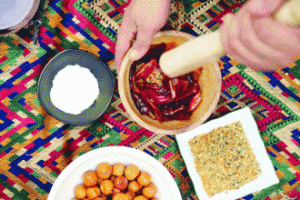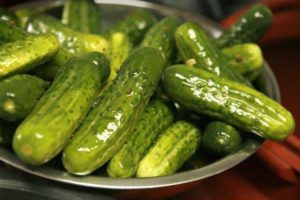This White Chicken Chili Recipe Will Spice Up Your Tailgate
BY PEOPLE STAFF – PEOPLE FOOD
This football season, we’ve partnered with Taste of the NFL and their favorite tailgating experts to share great game-day recipes for an even greater cause. Join these chefs in raising awareness and funds for hunger relief across the country by taking the Kick Hunger Challenge with your favorite football team and making a donation to their local food bank. And be sure to check PEOPLE.com every Thursday for a new game day recipe from your favorite celebrity chefs. Here, John Seymour, CEO/Co-Founder/Creative Director of Sweet Chick New York City shares a recipe for his white chicken chili.
To me, nothing says game day like a great bowl of chili. I love making this white chicken chili for the big game because it’s great for sharing with friends and will definitely keep you warm if you are tailgating outside.
This chili is so versatile: You can pour it on top of nachos, grilled hot dogs or just eat it with a spoon. The best part of this recipe, though, is it’s actually easy to make—and you can prep most of it the day before the game.
White Chicken Chili
Serves 6
¼ cup canola oil
3 cups chopped poblano peppers
4 cups chopped onions
¼ cup minced jalapeños
¼ cup minced garlic cloves
1 cup chopped tomatillos
2 tbsp. salt
2 tbsp. cumin
1 tbsp. coriander
1 tbsp. dried oregano
1 tbsp. ancho chili powder
½ tsp. cayenne
½ cup cornmeal
1 cup chicken stock blended with 1 cup cooked white beans
1 ½ cup heavy cream
1 cup chili base
2 tbsp. Worcestershire sauce
4 cooked chicken thighs, shredded
2 cups cooked white beans
3 cups roasted pumpkin
1. In a large Dutch oven, heat the canola oil over medium high heat. Add the poblano peppers, onions, jalapeños, garlic and tomatillos; cook, stirring occasionally, until tender, about 5 minutes.
2. Stir in the salt, cumin, coriander, oregano, chili powder and cayenne; and cook an additional 2 minutes.
3. Add cornmeal to mixture and stir until combined. Add blended chicken stock, heavy cream, chili base and Worcestershire, and stir until combined. Add shredded chicken and roasted pumpkin, and simmer until thickened, about 30 minutes. Adjust seasoning with salt.
4. Serve chili with sour cream, hot sauce and jalapeños. Serve with tortilla chips.






